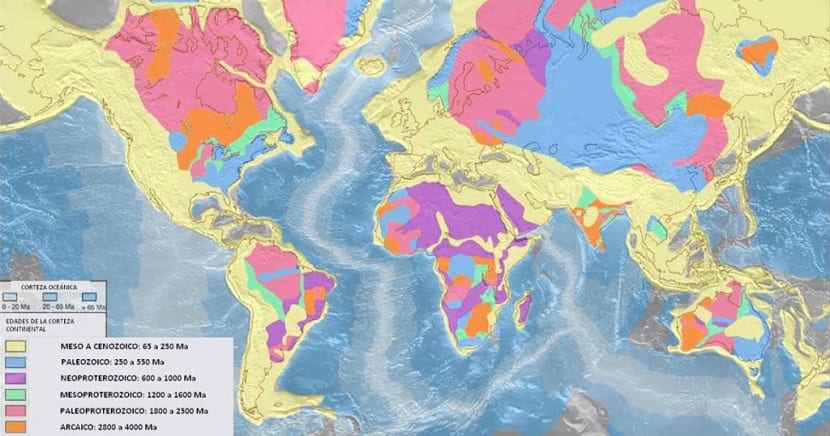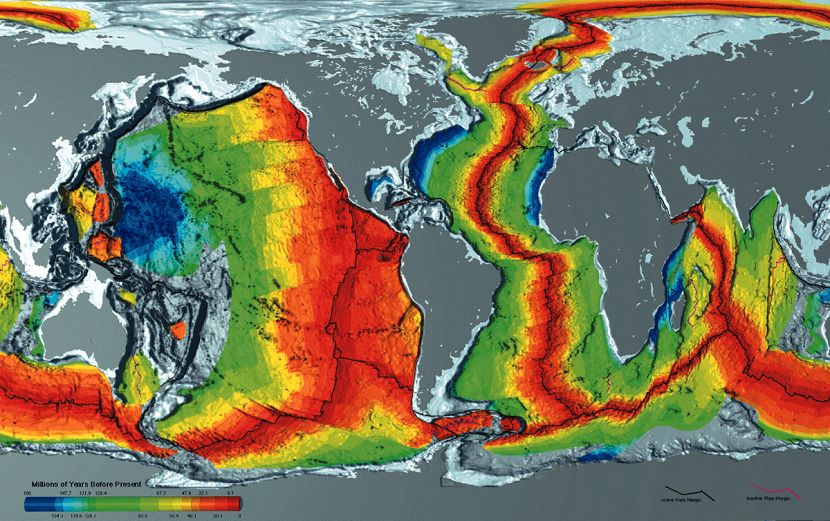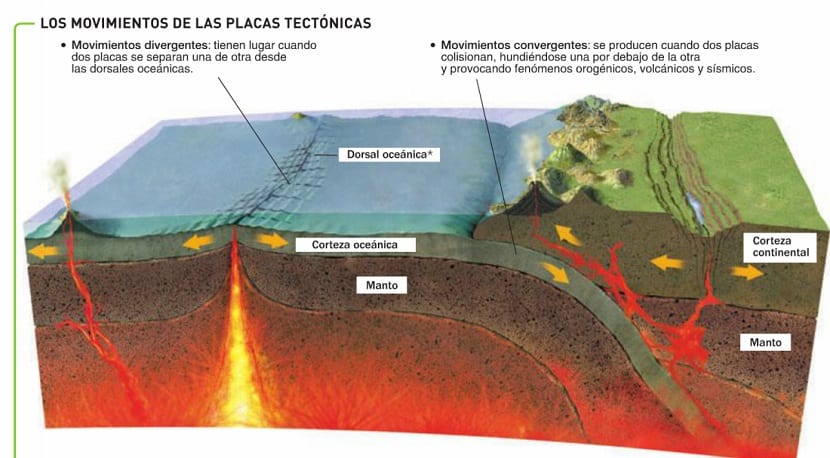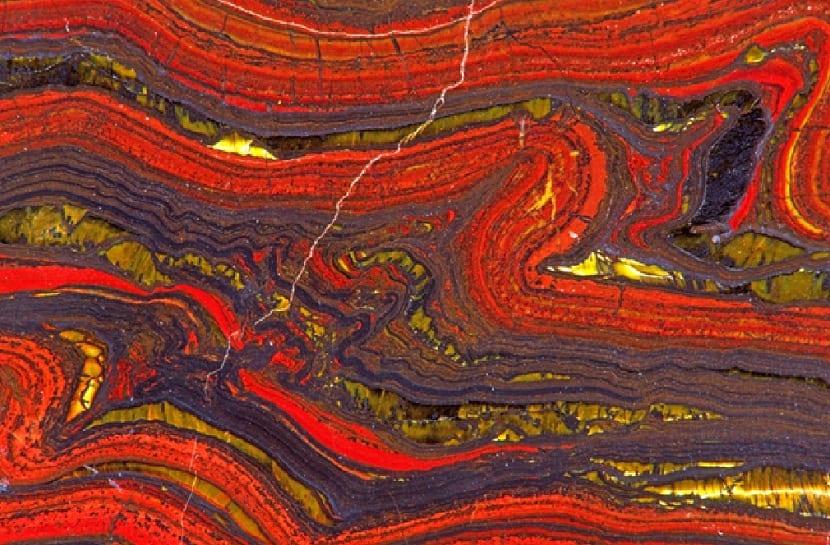
In the different layers of the EarthWe saw how our planet has its interior divided into different layers. The crust, the mantle and the nucleus are the main layers into which the interior of our planet is divided in terms of the nature of the materials. We must think that each layer has its characteristics and its function on the planet and in the development of living beings. Today, we are going to focus on explaining the continental crust in a more detailed way.
If you want to know more about the internal and external geology of our planet, here you can learn more about it.
Layers of the Earth and their function

The Earth's core is made up of molten rocks and large amounts of molten iron and nickel. These metals are what form the Earth's magnetic field that protects us from external elements of the Solar system how can the asteroids and meteorites or the solar wind and its radiation.
On the other hand, in the mantle is the layer of rocks and sand of different densities. This variation in densities is what causes the convection currents responsible for the movement and displacement of the tectonic plates. Because of this movement of the plates, the continents have transformed the relief of the world on many occasions. The continents were not arranged in the same way as they are today. For example, thanks to the knowledge of alfred wegener Earth was known to be made up of a super continent called Pangea.
Because of the movement of the tectonic plates it was moving away at the rate of about 2-3 cm a year until it had the current position. However, today the continents continue to move. What is not a perceptible movement for the human being. The continents have a tendency to move away.
On the other hand, we have the outermost layer of the planet which is the earth's crust. It is in the earth's crust where living beings and all the meteorology that we know develop.
Earth's crust and its characteristics

The earth's crust is about 40 km long and is divided into the continental crust and the oceanic crust. In the continental crust is the well-known Continental platform where the largest amounts of flora and fauna, minerals and fossil fuels such as oil and natural gas are found. Because of this, this area is of great economic interest to all the countries of the world.
The Earth's crust is the layer that constitutes only 1% of the mass of the entire celestial body. The boundary between the earth's crust and the mantle is the Mohorovicic discontinuity. The thickness of this layer is not uniform everywhere, but varies depending on the areas. In the terrestrial part it is usually between 30 and 70 km thick, while in the oceanic crust it is only 10 km thick.
It can be said that it is the most heterogeneous part of the planet, given that it has continental areas subject to changes produced by different geological agents and other external forces that build or destroy the relief such as the elements of the weather.
The vertical structure of the crust is divided, as we have mentioned, into continental and oceanic crust. The continental crust has an upper layer with composition in its majority granitic and with a lower majority basalt. On the other hand, the oceanic crust does not have a granite layer and both its age and its density are lower.
Characteristics of the continental crust

We are going to analyze the characteristics of the continental crust. As we have mentioned, it is the most complex layer and the thickest. There are the slopes and the continental shelf. We distinguish three vertical layers in the continental crust:
- Sedimentary layer. It is the uppermost part and the one that is more or less folded. In some areas of the Earth this layer does not exist, while in other places it is more than 3 km thick. The density is 2,5 gr / cm3.
- Granite layer. It is a layer where a great variety of metamorphic rocks are found, such as gneisses and mycaschists. Its density is 2,7 gr / cm3 and the thickness is usually between 10 and 15 km.
- Basalt layer. It is the deepest of the 3 and usually has a thickness of between 10 and 20 km. The density is 2,8 gr / cm3 or somewhat higher. The composition is thought to be between gabbros and amphibolites. Between these layers of granite and basalt, there can be rough contact that can be observed by P and S waves in earthquakes. This is where Conrad's discontinuity is established.
Structures of the continental crust

The structural model of the Earth contains some more defined areas found on the Earth's surface. These differences are seen between cratons and mountain ranges.
- Cratons they are the most stable areas that have remained for many millions of years. These areas do not usually have important reliefs and shields and platforms are included. Let's take a closer look at them:
- Shields are the areas that occupy the central part of the continents. They are responsible for the ancient mountain ranges that have been lowered and deteriorated by the process of erosion and other external agents during these thousands of years. In these areas the sediment layer has been completely lost. The rocks that are on the surface have been deposited and are not what formed the early mountains. Those that did form these shields have had to withstand great pressures and temperatures for their formation and, therefore, they appear metamorphosed.
- Platforms are those cratonic areas that still conserve the sedimentary layer. It is common to see this layer slightly folded.
On the other hand, we find the orogenic mountain ranges. They are found on the edges of the cratons. They are cortical areas that have been subjected to various deformations due to the movement and displacement of the tectonic plates. The most modern mountain ranges are distributed along the edge of the Pacific Ocean. Beneath these mountain ranges the crust is very thick and reaches 70 km mentioned at the beginning of the article.
I hope that with this information you can learn more about the continental crust.